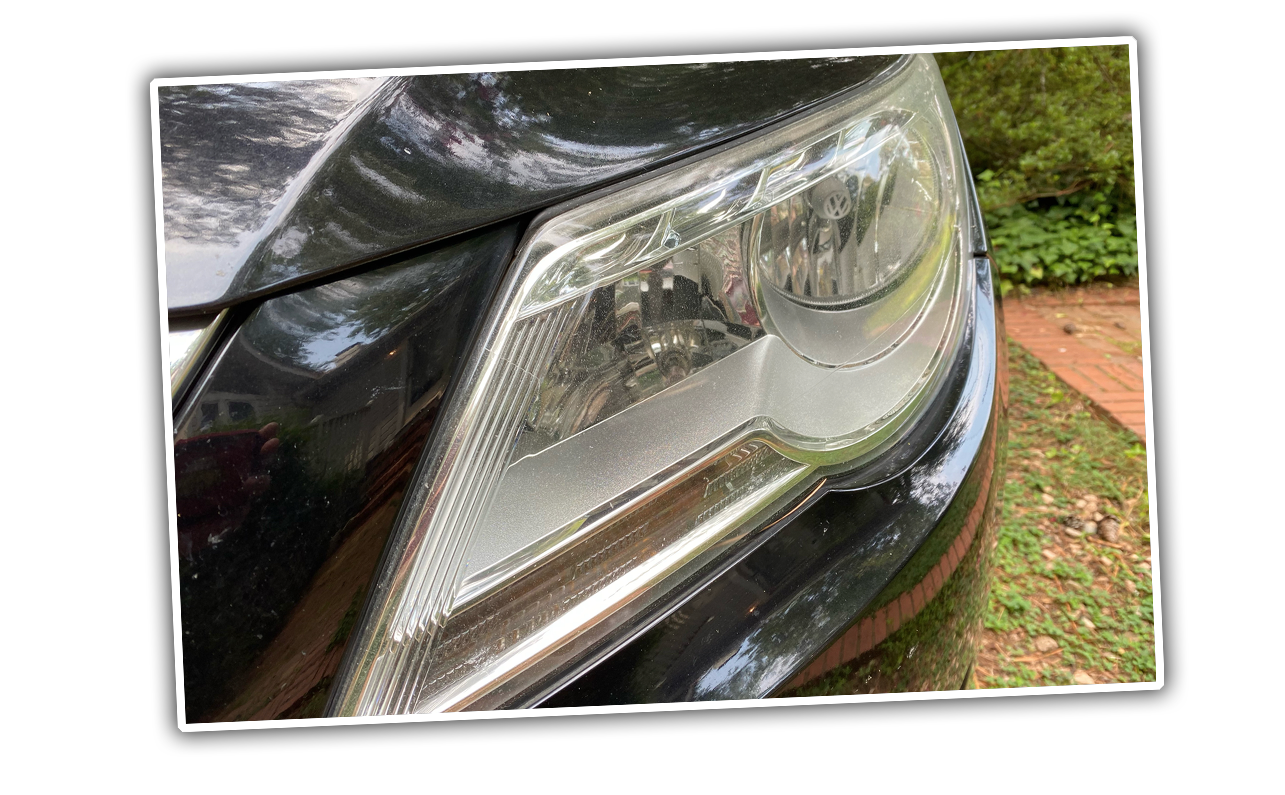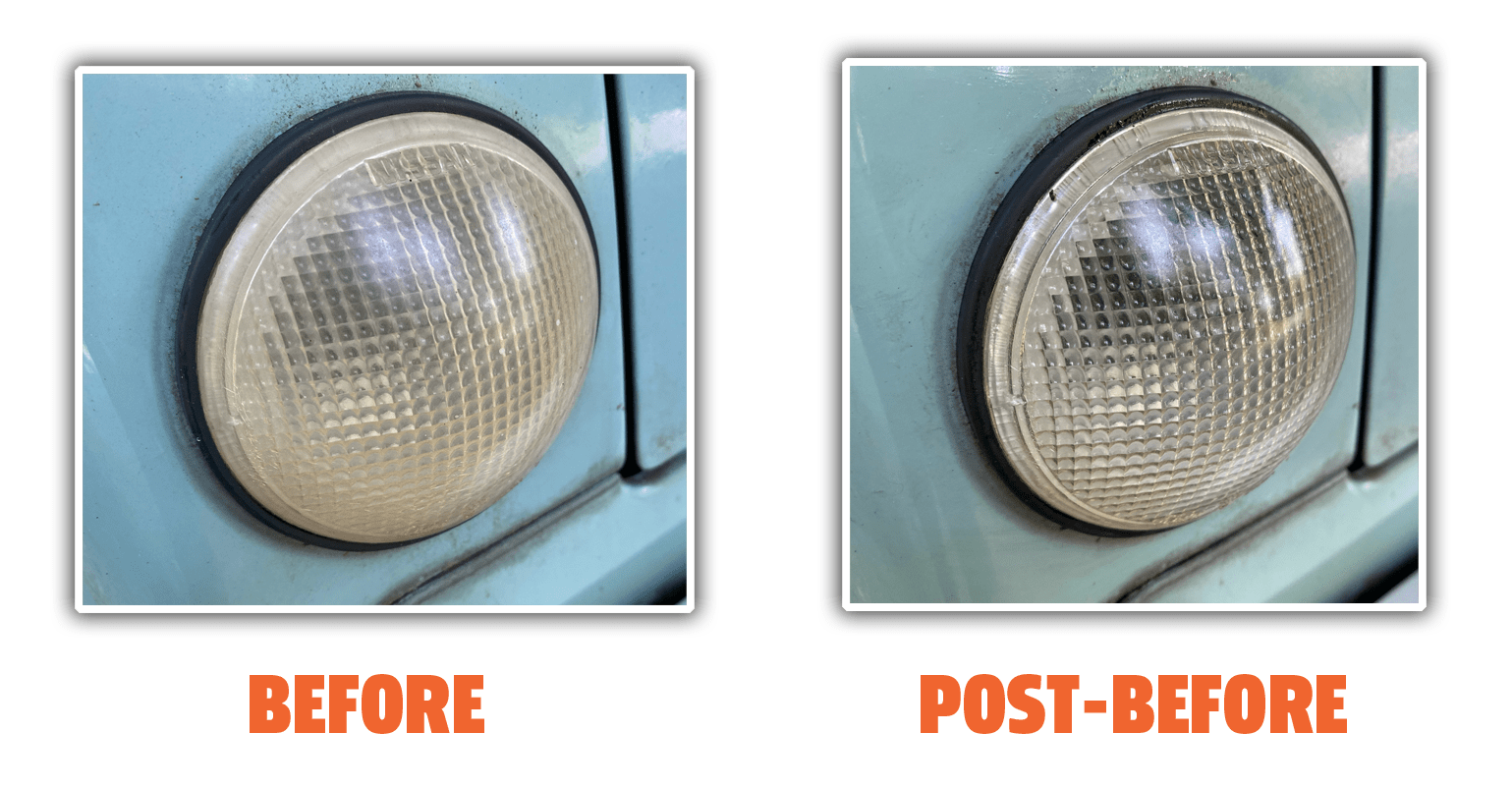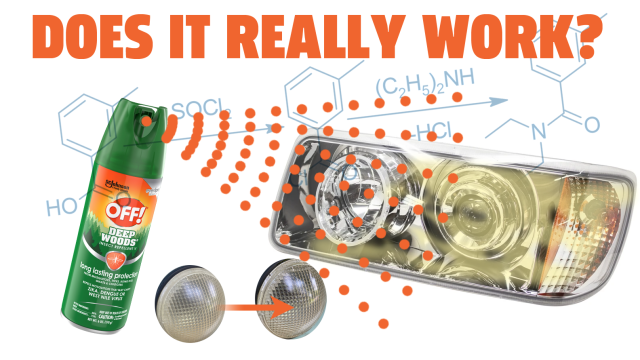I realise this isn’t a new thing, but thanks to the cyclic nature of stuff on the internet, sites like TikTok have been featuring something that was big about five years ago: using bug repellent to clean cloudy old headlights. The results look to be quite dramatic, and it’s hard not to want to try it, so I did — but there’s a pretty big caveat.
OK, first so you know I’m not lying to you that this is a current thing on the electric moving-picture networks, here’s a video from May rounding up a bunch of TikTok trends, and the headlight/bug spray thing is right there:
Now, my wife saw some of these videos and was very curious; she showed me, and I was, too, so we impetuously thought we’d give it a try. I mean, the videos do make it seem pretty compelling, and, somehow, neither of us had ever encountered these videos in the past.
The videos are convincing:
So, hopped up on internet hype, we tried it on her Tiguan, and got really great results. Her lights weren’t too bad before, but a quick application of bug repellent really did make them look crystal-clear:

It was fun, and we did with some excitement, so I didn’t really stop to think why this was working so quickly and so effectively. In fact, I was so taken by the reaction, I figured I’d try a little test on my Pao’s plastic taillight lenses, which were a little cloudy from age. I tried the clear reverse lamp first, and was impressed with the result:

Hey, look at that! The lens is definitely more clear, less yellowed, and overall looks better! A victory, right?
Well, not so fast.
True to my lifelong idiot brand, I decided to see what was actually happening after I sprayed the stuff on my lights, and the results confirmed something that was bubbling around in the back of my brain: the plastic is actually being melted, a tiny bit.
The reason this appears to work so well is that the bug sprays that do this contain a chemical called DEET, which is also called N,N-Diethyl-meta-toluamide when it gets into real trouble with its mum.
DEET seems to do an effective job of “masking” the odorants humans produce so that insects can’t detect them as effectively. It’s also a pretty good solvent, and can soften hard plastics, which is what we’re seeing with the lights.
When you spray DEET on a rag and wipe it on your lights, it’s effectively removing an outer layer of plastic. This gets rid of a lot of grime and oxidized material, but can leave the plastic sticky and malleable, and will likely just re-oxidize and cloud again.
In the case of the Tiguan’s lights, we seemed to get lucky, as they still look pretty good. My taillights, likely because they’re an older, perhaps more porous type of plastic, didn’t fare as well, and had this side effect after about an hour since the DEET was applied:

See all that white crap on there? After sitting in the air and humidity, the lights started to form that white layer of, I don’t know, crystallised bits of my own idiocy? It could be scraped or wiped off, but after cleaning them it re-appeared.
Why am I such a moron? Did I screw up my taillights in a vain attempt to have them regain their youthful lustre? Is this hubris hitting me where it knows it’ll hurt most, right in the taillights?
Maybe. I’ve learned a hard lesson here, and one that I’d like to pass on to you: while the bug spray trick may prove effective for modern-ish hard headlight plastics, if done carefully (don’t spray right on the light, use a rag, be careful not to get any on paint, test an area to make sure it’s not making the plastic too sticky, etc) I would not do it on older taillight plastics, lest you end up in my dumb shoes.
All isn’t lost, though; if you did this, like I did, I’m happy to say I found a solution.
Since it seems that the issue has to do with the DEET breaking down a thin outer layer of plastic which is reacting with the air to form that white crap, I thought maybe some sort of barrier could help.
I took some orange oil cleaner and sprayed it on the lights, letting the orange oil sink into the plastic, and it seems to have done the trick; the lights have stayed shiny, free of whatever that white stuff is, and, as a bonus, now smell like orange Jolly Ranchers.

So, there you go. Don’t believe everything you see on the internet, of course, and in this case, well, maybe you can believe some of it: the bug spray does make the lights clear again, at the expense of a layer of plastic. Some lights may be ok with this treatment, at least temporarily, some may do what mine did.
And, if you screwed up, try some orange oil.
